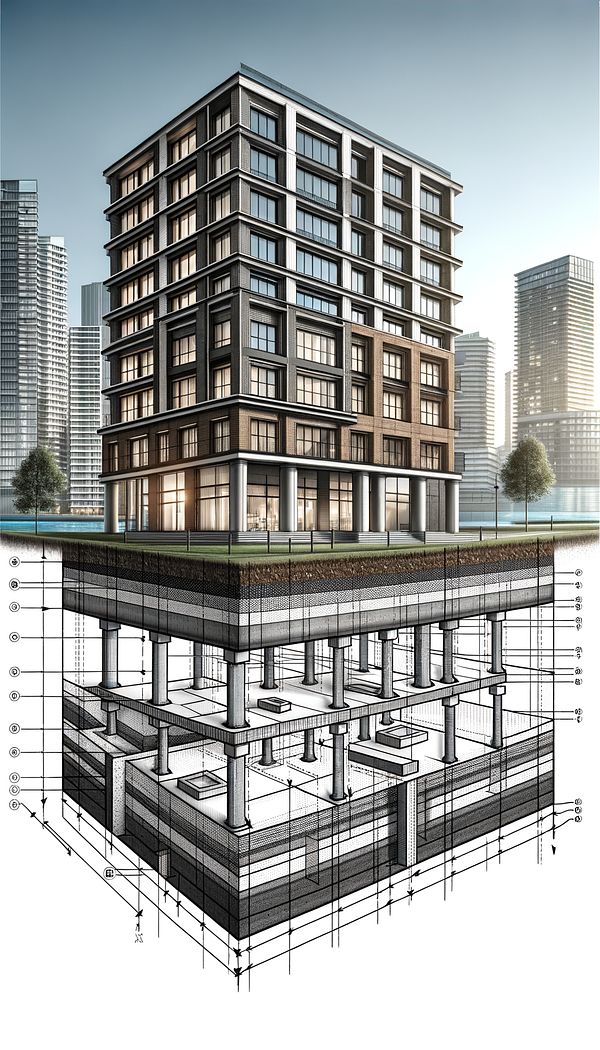What is Foundation?
Foundation refers to the lowest load-bearing part of a building which is typically situated below ground level.
Description
In the realm of interior design and architecture, the foundation is a fundamental aspect that ensures the stability and longevity of a building. It serves as the interface between the structure above and the ground below, distributing the weight of the building evenly to prevent settling, shifting, or collapse. Foundations are tailored to the specific needs of the building, taking into account factors such as soil type, climate, and the building's size.
There are various types of foundations, including shallow foundations, such as slab-on-grade or crawl spaces, and deep foundations, like piers or piles, chosen based on the building requirements and ground conditions. A well-designed foundation also considers factors like drainage and insulation to protect the building from moisture and temperature-related issues.
In interior design, understanding the foundation is critical for renovations, especially when structural changes are considered. It influences decisions about room layout, material choices, and even the placement of heavy furniture or fixtures.
Usage
In a residential context, a proper foundation ensures the home remains stable and safe over time. For example, in areas prone to flooding, raising the foundation to include a crawl space can provide essential protection. Conversely, in urban settings where space is at a premium, deep foundations such as pilings allow for the construction of high-rise buildings.
FAQs
-
Why is foundation important in building construction?
The foundation is crucial because it supports the entire structure, ensuring stability, preventing settling or shifting, and protecting against environmental hazards.
-
Can a building’s foundation be altered after construction?
Altering a foundation post-construction is complex and often expensive, usually requiring professional assessment to avoid compromising the building's safety and integrity.
-
How do soil conditions affect foundation choices?
Soil conditions significantly influence foundation decisions; for instance, softer soils might necessitate a deeper foundation to ensure stability, while rocky terrains may support shallower options.
Practical Application
When planning an interior renovation, always consider the foundation's capacity to support any structural changes. This may involve consulting with a structural engineer to ensure that the modifications will not adversely affect the building’s integrity. Additionally, for new constructions, choose a foundation type that aligns with both the architectural design and the environmental conditions of the site.
-
Architectural Elements199 articles
-
Construction & Building86 articles
-
Sustainability & Eco-Friendly Design69 articles
-
Architectural SalvageArchitectural salvage refers to elements of buildings saved from demolition or renovations for reuse in other projects.
-
InlayAn inlay is a decorative technique that involves embedding pieces of one material into another to create patterns or designs.
-
Barrel VaultA barrel vault, also known as a tunnel vault or a wagon vault, is an architectural element characterized by its semi-cylindrical shape.
-
RenderingRendering in interior design refers to the process of creating two-dimensional and three-dimensional images or animations showing the attributes of a proposed architectural design.
-
CasementCasement refers to a window that is attached to its frame by one or more hinges at the side.
